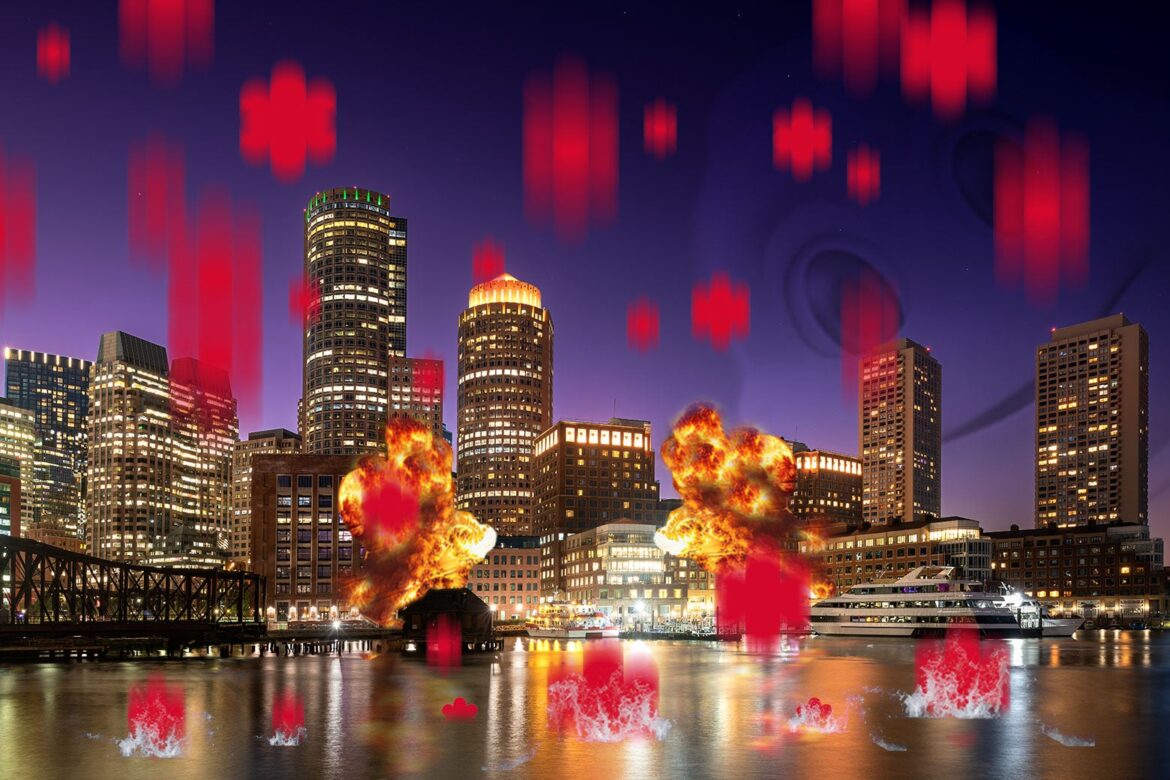Sign up for the Slatest to get the most insightful analysis, criticism, and advice out there, delivered to your inbox daily.
In the winter between 1838 and 1839, Charles Goodyear labored at a rubber factory in the small mill town of Woburn, Massachusetts, some 10 miles north of Boston. He conducted experiments combining caoutchouc, the natural latex of the Pará rubber tree, with sulfur, nitric acid, and lead oxide. Goodyear was trying to solve a problem that all rubber producers had at the time—the substance melted in the heat and cracked in the cold. Commercially, it was useless.
But the weary inventor eventually had a stroke of luck. In his own words, he “was surprised to find that the specimen, being carelessly brought in contact with a hot stove, charred like leather.” By accidentally dropping a mix of rubber and sulfur onto a stovetop, Goodyear had come across the process of vulcanization, which stabilized the latex against both heat and cold. A global rubber boom would follow, leveraging vulcanization in the production of sundry new products like tubing, gaskets, padding, and—once the automobile was invented—tires.
Which is why I find it laughable that Boston is, as announced on Tuesday, paying the Michelin Guide to evaluate its restaurants. Michelin, in addition to being the preeminent assessor of fine dining experiences globally, is a French tire company. Founded in 1889 to sell removable, pneumatic bicycle tires, they began publishing travel guides to France in 1900. Michelin strategized that they could sell more tires if more people were driving around the country. Empty stomachs might be navigated to distant restaurants. A couple of flats would surely ensue.
While Charles Goodyear lived before cars were invented (and is only related to Goodyear Tire thanks to the notoriety of his name in the rubber industry), the French culinary guide would not exist if Mr. Goodyear hadn’t tried cooking his rubber on the stove. Stars or no stars, the proud Bostonian in me feels Michelin owes us some credit, not a bill for deigning to assess our wonderful eateries.
But this isn’t just about Boston or rubber. My skepticism of the French guide arises from its gradual but persistent invasion of American cities and their culinary scenes. For two decades now, Michelin has been bent on global expansion, but they’ve pivoted away from profiting from the collateral damage of travel (the guide was free prior to 1920). Now, the creation of the guide itself is big business.
For the first time, in 2006, the guide awarded its prestigious stars on this side of the Atlantic to 39 different New York City restaurants. The Statue of Liberty, I take it, was the Michelin Man’s Trojan horse into the United States. Between 2007 and 2008, new guides were announced in San Francisco, Los Angeles, and Las Vegas, but Michelin later canceled both Las Vegas and Los Angeles in 2010 “due to the economic environment.” In 2011, Chicago received the Michelin treatment. In 2017, it moved to Washington D.C. The San Francisco list expanded to include the entire state of California in 2019. Florida’s guide has similarly expanded from Miami, Orlando, and Tampa in 2022 to the entire state by 2026. Colorado and Atlanta started with the guide in 2023, Texas followed in 2024, and the American South just debuted this year. The guides for Philadelphia and Boston, debuted on Nov. 18, are just the two latest members of an increasingly less exclusive list of American Michelin Guides.
As of writing, there are 276 restaurants with one, two, or three Michelin stars in the United States (compared to 642 in France). There is no doubt that the achievement changes the lives of the chefs, owners, and staff in each of these acclaimed kitchens. But does the outsize influence of Michelin change American food for the better?
In 1956, the humorist Art Buchwald asked the famous American chef James Beard, for whom another set of prestigious (and exclusively American) restaurant awards are named, “Do you plan to make an American ‘Guide Michelin’?” The legendary chef answered, “No. You couldn’t do that in the United States. The cost would make it impossible and besides, there is too much of a turnover in the restaurant business in America. As soon as a restaurant becomes successful in the United States it is either sold for a capital gain or enlarged. There is no constant.”
As it turns out, Beard was prescient. A Michelin Guide is indeed a costly proposition for the United States. Thus, it has become one that requires a significant source of funding. Tourist organizations around the country, including Visit California, Travel South USA, Travel Texas, Meet Boston, and the Philadelphia Convention and Visitors Bureau enter into strategic agreements with the Michelin Guide, paying them to create regional guides in hopes of attracting tourist revenue. Where Michelin once produced the guide at a loss in hopes of selling tires, cities now shell out for the guide in hopes of attracting outsiders. All the newer guides in the United States are pay-to-play. Yet this fact is not loudly publicized alongside the momentous star announcements, despite indicating that Michelin’s arrival has more to do with a city’s investment in tourism than its perceived prowess in eating out.
For Boston, a recent windfall looks to be the source of the financial backing. The nonprofit tourist organization Meet Boston (which did not respond to my request for comment) is funded through fees assessed on hotel rooms in the cities of Boston and Cambridge. In 2021, a new tax was assessed on Boston-area hotels of 1.5 percent the cost of the room. The proceeds accrue directly to the Greater Boston Convention and Visitors Bureau, also known as Meet Boston. Overnight, the nonprofit’s revenue doubled from $16.2 million in 2021 to $39.9 million in 2022. In 2024, $34.8 million came from the 1.5 percent fee alone (they also get funding from convention fees, government grants, and private sponsorships). Why is the Michelin Guide coming to Boston so soon after this cash materialized? I presume because the guide isn’t cheap and Meet Boston has more cash than they know what to do with. The price of coverage, though, is never public, even though nonprofits are footing the bill.
Philadelphia, too, is funding their guide through the Philadelphia Convention and Visitors Bureau, another nonprofit whose largest single source of funding is a hotel room tax which grossed $9.4 million in 2024 (though total revenue of the Philly organization has only grown from $18 million in 2018 to close to $23 million in 2024).
“Many consumers are unaware that Michelin is a pay-to-play review system sponsored by the city or region (in this case our Convention and Visitors Bureau),” warns Jonathan Deutsch, director of Drexel Food Lab. “Do diners assume that because Philly previously had no Michelin-starred restaurants that our city was a second-rate dining destination? To the contrary, I would argue that the reason Philly (and Boston) are such great dining destinations is the diversity of cuisine and quality experience across price points, neighborhoods, and cultures.”
How does this make other cities look if they have not yet mustered the funds to buy in? Is their cuisine unworthy?
A larger concern is that these guides are for tourists by design. Michelin started publishing guides in 1900 to get people to burn some rubber. Today, the guides are funded by taxes paid by people staying in hotel rooms in a city—not locals. Locals have no say. Local restaurants have no say. While research indicates that the guide presents a good return on investment for cities, its increasing expansion will continue to water down its value proposition of attracting high-spending tourists. If every major city in America has a guide (Phoenix is the only one of the 10 largest American cities not covered in 2025), how much more of a leg up does the guide give you over the next destination? After all, stars appear brightest where there are fewer to compete for the eye’s attention.

Kelly Jones and Josh Levin
In 1990, One of the Great Forgotten Acts of American Subterfuge Unfolded. It Involved Pizza Hut.
Read More
My question for Michelin in cities like Boston and Philadelphia: Can we get locals into the fine dining establishments to which they will grant stars? If Bostonian cuisine is not accompanied by an adequately Bostonian crowd for the tourists’ enjoyment—whatever the cuisine or crowd may look like—then Michelin is not actually creating a regional guide. Instead, it is engendering a fleet of restaurants that fit into its preexisting rubric. It is teaching ambitious chefs to cook to a criterion, not a crowd.
It’s All Over the Internet and Even SNL. Bill Clinton and Donald Trump Sure Don’t Want You Talking About It.
Now Tech Bros Want to Disrupt Your Trip to the Grocery Store. Their Plans Aren’t Pretty.
Everyone Inside America’s Most Flailing Destination City Has a Theory for What’s Wrong. Now I Have My Own.
This Content is Available for Slate Plus members only
They’re the Most Insidious Mom Influencers on TikTok. They Drive Me Insane. I Know Why They’re Doing This.
I don’t wonder about the quality or merit of food in Boston or Philadelphia (not to mention smaller cities in the northeast like Portland, Maine, or Providence, Rhode Island). A great duck confit is welcome in Boston, but we shouldn’t forget about the duck boats or Make Way for Ducklings. I do wonder how many Michelin restaurants in France source their lobster from the icy depths of the Gulf of Maine via the hands of New England’s fisherman. They must fly the costly crustaceans out of Boston Logan direct to Charles de Gaulle. I also wonder about Michelin’s take on the morning decadence of a roll spread with Amish hand-churned butter and topped with eggs and a sheet of crispy scrapple. Goodyear combined sulfur and rubber on a hot stovetop; how does Michelin feel about Philly’s marriage of steak and cheese?
It is the character of our cities and the people who live in them that drive our food scenes. Criticism and acclaim should follow suit. As it currently stands, tourist dollars are funding an invisible army of anonymous assessors to determine which of our local eateries meet a French tire company’s criterion. If you want my recommendation, the Michelin Guide should hit the road.

Sign up for Slate’s evening newsletter.


Dining and Cooking